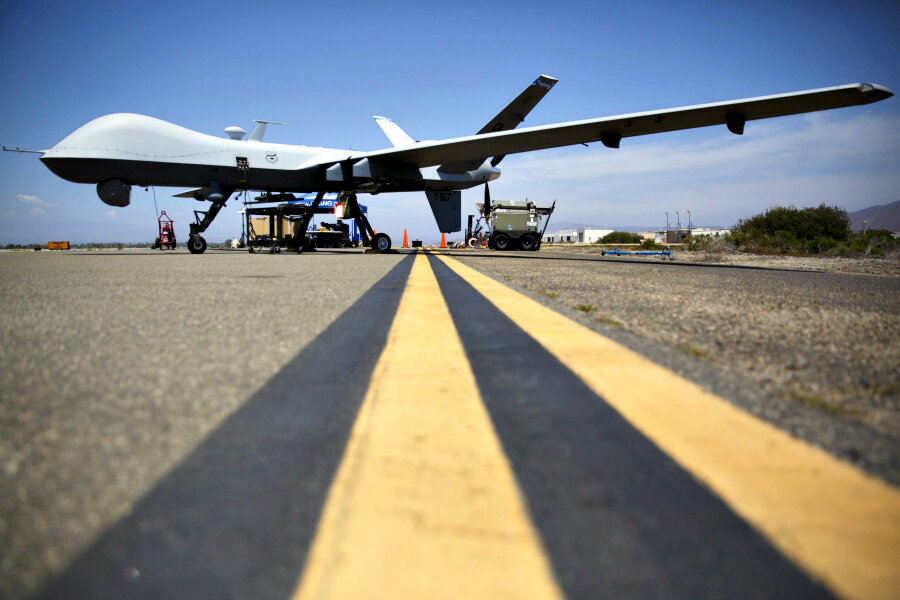The difficulty with drones
Loading...
Could any piece of technology sound less alarming than a drone? It conjures up a robotic worker doing simple repetitive tasks too boring for humans.
But in the world of aircraft, drones may be the most alarming – and disruptive – technology in the skies. One expert compares current understanding of drones to the way airplanes were viewed at the end of World War I: Everyone knew they would somehow be game changers, but no one was quite sure exactly how. A generation later, air superiority became a key to victory in World War II.
Today rapidly evolving technologies – along with the proliferation of drones operating in more countries – continue to raise both ethical and geopolitical questions.
In September, Pakistan surprised much of the world when it used a military drone aircraft (likely developed with aid from China) to strike a group of antigovernment militants in its Waziristan region. It joined the United States, Britain, and Israel as nations who have used a military drone to carry out a targeted killing.
Russia has brought drones to Syria as part of its air support for the regime of President Bashar al-Assad. China has reportedly sold drones to Nigeria to aid in its mission to subdue the Islamic militant group Boko Haram.
In the US, the argument over the ethics of using drones for targeted killings has gone on for some time. Mistakes in targeting have resulted in civilian casualties and created a hostile anti-US reaction (as well as caused a tremendous psychological burden on overworked American remote pilots).
What are the rules of warfare when one side can attack without putting the lives of its own combatants in danger? The US has now set a precedent regarding the use of drones as a kind of long-distance warfare. Can the US ask other nations to not follow in its footsteps?
What’s next? A US Air Force Association meeting in September included talk of “swarms” of drones that would accompany US piloted aircraft into battle, acting as “wingmen” to both carry supplies and aid in the attack. And US drones may soon be armed with lasers that will carry out tasks such as disabling enemy electronics or ground-based weapons.
New advances in materials science mean “vampire” drones could be launched from planes, deliver their payload, and then disintegrate to dust, leaving behind no technology to be captured by an enemy.
With the capabilities of drones ever expanding now is the time to consider what constraints should be placed on them.
“[I]t is crucial that Washington reconsider its own permissiveness over targeted [drone] killings and adhere to stronger limits on this practice,” writes Michael Boyle, an associate professor of political science at La Salle University in Philadelphia who studies terrorism and political violence. The US, he says, should also consider engaging in talks with other nations to forge agreements that regulate the sale and use of drone technology and the spread of targeted killings.
If not, many countries may soon use drone strikes “in ways that the US does not approve,” he says.





